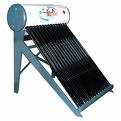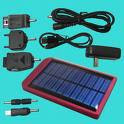How Geothermal Energy Works

By Gloria Smith
Geothermal energy is one of the renewable forms of energy being utilized today in various applications. As a natural resource that is in abundant supply, its usage in the future is expected to grow more.
The term geothermal is actually a combination of two Greek words - geo which means earth and therme meaning heat. As one of earth's resources, geothermal energy is clean and can be sustained for long years.
This alternative energy comes from the earth's heat found underneath its surface. The earth's crust is mainly a result of the past existence of millions of volcanoes and great volumes of magma that did not erupt but rather cooled below the surface. In addition, the earth's core has high temperatures between 50 and 60 degrees Fahrenheit that remain constant throughout the year.
This makes it an ideal source of heat for various purposes. Among its resources include the shallow ground, hot water and hot rock below the earth's surface and molten rock or magma deep down. These resources have two main categories - the high temperature (220 degrees Celsius and above) geothermal resources found in volcanic regions and island chains and the moderate/low temperature found on all continents. The high temperature resources are mostly used in power production.
Technologies
In extracting hot water for geothermal reservoirs, wells are normally drilled into underground reservoirs for use in generating electricity. The steam from a reservoir is used by some geothermal power plants to power turbine/generator. Other plants use the hot water to boil a working fluid that vaporizes and then turns a turbine.
Hot dry rock, on the other hand, can be found about three to five miles deep down the earth's surface. In certain areas, they can be found at lesser depths. To extract heat from these rocks, cold water is injected down a well which filters through the cracks in the rocks situated in the hot region. Heated water is eventually drawn off from the recovery well. This then flashes into steam upon reaching the surface.
Steam can be used to drive a turbo generator. However, in order to do this, steam must first be purified. In heating homes, it can pass through a heat exchanger to provide heated water.
A hot dry rock system (EGS) reaches at least 10 kilometers down into hard rock. It is estimated that the United States alone has a huge resource of hard rocks that can supply the world's energy needs for some 30,000 years.
Major uses
Hot water sourced underground can be used in a number of ways such as in generating electricity, heating buildings, growing plants in greenhouses, drying crops, heating water at fish farms. In industrial application, it is used in pasteurizing milk.
Geothermal heat pumps are used in heating and cooling homes and buildings. This type of heating system is made up of a heat pump, ductwork or air delivery system and a loop or a series of pipes buried in the shallow ground near the home or building.
Currently, geothermal power is produced in more than 20 countries. These include the U.S., Italy, Germany, France, The Netherlands, Mexico, Russia, New Zealand, Turkey, China, Japan, the Philippines and Iceland. The first geothermal power plant was constructed at Landrello, Italy while the second was built at Wairekei in New Zealand.















